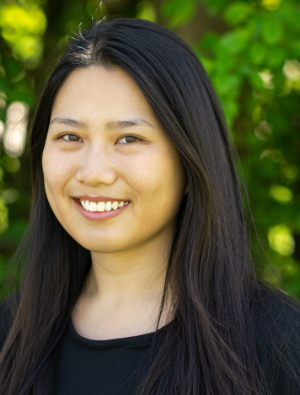Lisa Hua
|
|
Relieving Asymmetry Stress in Model MembranesPrincipal Investigator: Prof. Dr. Heiko Heerklotz Institute of Pharmaceutical SciencesPharmaceutical Technology and Biopharmacy Hermann-Herder-Str. 9, Room 02.013 79104 Freiburg Phone: +49 (0) 761 203 6336 Lisa.hua@pharmazie.uni-freiburg.de |
Abstract
Lipid membranes are the most widespread barrier in living species on earth. How membranes interact with the environment might decide on life or death, if, for example, an antimicrobial peptide inserts a bacterial membrane. In this particular case, asymmetry stress might occur. How the membrane deals with this kind of stress, determines, whether the bacteria live on or not.
Asymmetry stress describes the intrinsic area mismatch between the inner and outer leaflet in the membrane, which can result from asymmetric partitioning of molecules that have a low transbilayer diffusion rate. This can be the case for antimicrobial compounds, but also for other impermeable molecules, such as but not limited to: lysolipids (LPC), maltosides or digitonin. Asymmetry stress is discussed as a mode of action of various antimicrobial peptides, but is also known as a regulator in membrane remodeling processes. To understand how asymmetry stress is released, provides insight into the basic mechanisms how the membrane react to outer influences.
To deal with asymmetry stress, different mechanisms have been reported or hypothesized, such as micellar solubilization, staying out, vesicle budding and many more. However, the question is, which relaxation mechanisms are actually pursued and why?
In my PhD project I work with large unilamellar vesicles (LUVs) as model membranes to shed light on the contribution of the before mentioned stress relieving mechanisms. Using asymmetric flow-field-flow fractionation (AF4) vesicle budding can be quantified. Our studies show how vesicle budding is an effective but limited mechanism to relieve asymmetry stress. Other stress relieving mechanisms are explored by using leakage assays or isothermal titration calorimetry (ITC).
Methods
- Asymmetric Flow Field-Flow Fractionation (AF4)
- Dynamic Light Scattering (DLS)
- Isothermal Titration Calorimetry (ITC)
- Time-Correlated Single Photon Counting (TCSPC)
Publications
Hua L, Kaiser M, Carabadjac I, Meister A, Hause G, Heerklotz H. Vesicle budding caused by lysolipid-induced asymmetry stress. Biophys J. 2023 Aug 29:S0006-3495(23)00554-4. doi: 10.1016/j.bpj.2023.08.023




